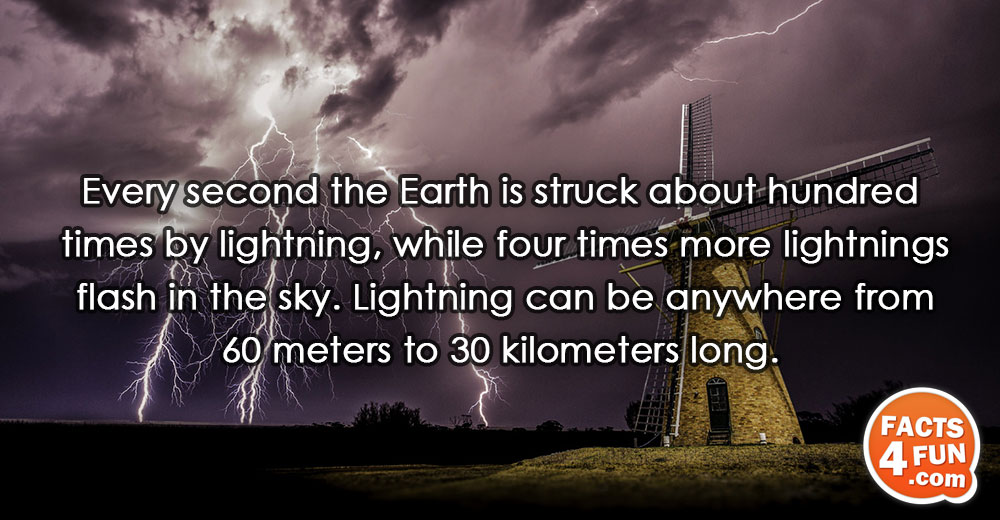The earth experiences 50 000 earth quakes per year and is hit by lightning 100 times a second

The Earth experiences 50,000 Earthquakes per year and is hit by Lightning 100 times a second.

When it comes to natural phenomena, the Earth is an extraordinary planet that showcases its powerful forces. With its diverse landscapes and dynamic geological processes, our planet never fails to amaze us. Among the many awe-inspiring occurrences, two phenomena stand out: earthquakes and lightning strikes.
Earthquakes Shake the Earth’s Foundation

Earthquakes, also known as quakes, are intense shaking movements of the Earth’s surface. These sudden releases of energy result from the movement of tectonic plates beneath the Earth’s crust. As these massive plates slide past, collide, or separate, immense stress builds up, eventually causing the ground to shake.
Did you know that the Earth experiences an astonishing average of 50,000 earthquakes per year? That’s more than 130 quakes each day! Some of these quakes are minor, imperceptible to humans, while others can be extremely destructive, leading to devastating consequences.
The intensity and magnitude of earthquakes are measured using the Richter scale, which quantifies the amount of energy released during the seismic event. The strength of an earthquake correlates with the magnitude, ranging from minor tremors (less than 3.0 magnitude) to major quakes (above 7.0 magnitude). Each year, numerous earthquakes occur worldwide, varying in terms of strength, location, and impact.
Lightning: Nature’s Electrifying Fury
While earthquakes shape the Earth’s surface, lightning illuminates the sky, unveiling nature’s electrifying fury. Lightning is a sudden, powerful discharge of electrical energy between the Earth’s surface and the atmosphere. It commonly occurs during thunderstorms, when the buildup of static electricity in the clouds reaches a breaking point.
At any given second, it is estimated that the Earth is struck by lightning approximately 100 times. This means that millions of lightning bolts hit the Earth’s surface each day, resulting in over 8 million lightning strikes per day on average. These bolts can vary in length, intensity, and duration.
Lightning is a captivating natural phenomenon that poses both beauty and danger. Its dazzling display can light up the night sky, while its electrical power can cause significant damage to structures, trigger wildfires, and even claim lives. Therefore, it is essential to understand and appreciate the risks associated with lightning strikes, ensuring personal safety during thunderstorms.
Conclusion
In conclusion, the Earth experiences a staggering 50,000 earthquakes every year and encounters the striking force of lightning 100 times a second. These powerful events shape our planet, highlighting the unique characteristics and immense forces present in nature. Whether it’s the rumbling of the ground or the electrifying display in the sky, these phenomena remind us of the Earth’s constant dynamism and the forces we must learn to coexist with.
Sources:
Related Posts
Quick Links
Legal Stuff

